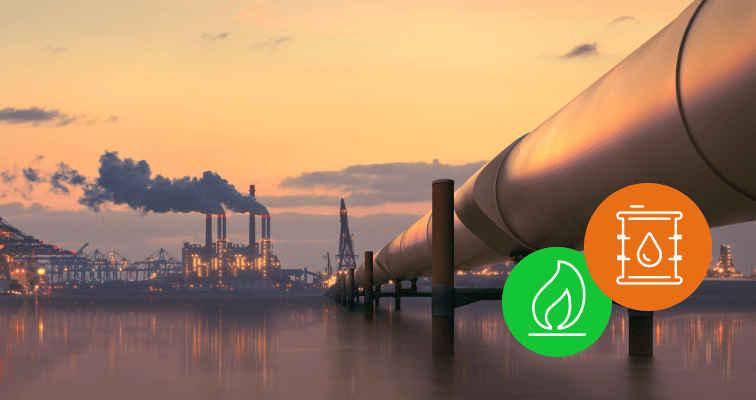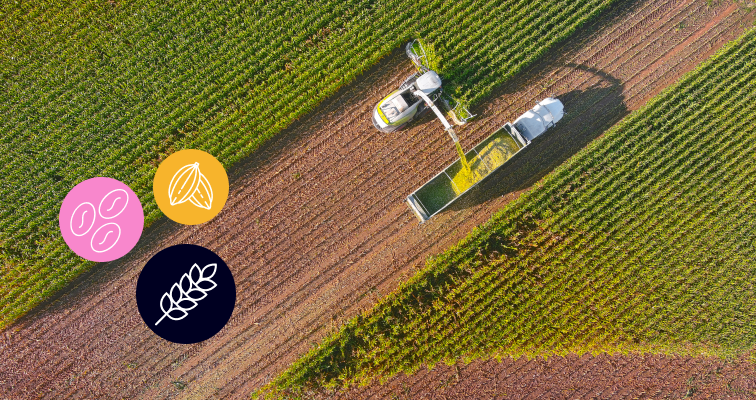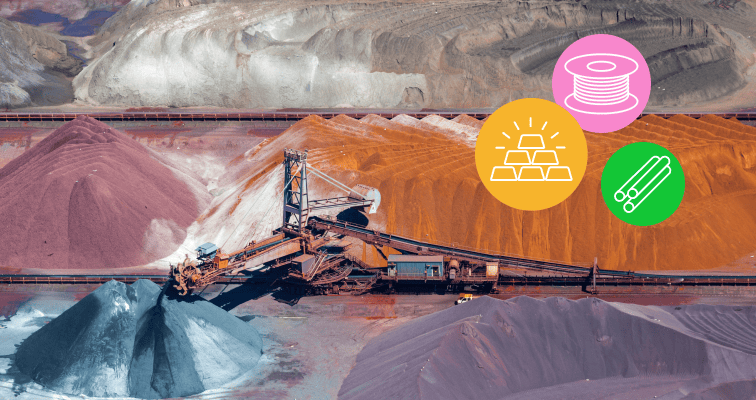Commodities can help to improve the overall balance of an investment portfolio. Learn which commodities are the most traded around the world, and which factors impact the prices of commodities.
Commodities are traded for a variety of reasons. While commodity producers, big corporations and governments often buy and sell commodities as part of their regular operations, investors also trade commodities for speculative purposes.
In order to determine which commodity market best suits your investment approach, it is important to first understand the nature of the different markets and how they operate.
Tip: Commodity markets often exhibit long-term price trends, which tend to favour investors using trend trading strategies.
| Commodity Group | Commodity |
|---|---|
| Energy | Crude Oil: WTI, Natural Gas, Crude Oil: Brent, Gas Oil, Gasoline, Heating Oil |
| Grains | Soybeans, Corn, Soybean Meal, Soybean Oil, Wheat |
| Softs | Sugar, Coffee, Cotton |
| Precious Metals | Gold, Silver |
| Industrial Metals | Copper, Aluminium, Zinc, Nickel |
| Livestock | Live Cattle, Lean Hogs |

Types of commodities
The commodity sector is diverse and extensive, resulting in the introduction of categorisation for better organisation. As per standard market practices, types of commodities are filtered into the following groups:
- Energy commodities
- Agricultural or soft commodities
- Metal commodities
Energy commodities
Energy commodities, particularly oil and gas, play a pivotal role in the economy. Energy commodities are some of the most traded commodities in the world, representing around one-third of all trades in the global commodities market, with crude oil trading alone making up 15% of the total.
There are two different grades of oil: West Texas Intermediate (WTI) and Brent Crude. These two grades have an almost equal market size which ensures high liquidity and the smoothness of trade executions. This, in turn, makes these markets a good potential option for investors looking for relatively straightforward entry and exit points.
Tip: The price of energy commodities is closely linked to levels of global economic activity.
Agricultural commodities
Agricultural commodities are traded on global exchanges and typically make up about one-third of global commodity trading activity. Investors can engage in trading various agricultural products such as lean hogs, coffee, sugar and corn.
For international commodity trade to be efficient, the units of different commodities must be uniform and interchangeable. For example, bushels of wheat grown in Australia and Canada need to be, and are, considered similar enough to be viewed as a single asset type, which allows for seamless trading across borders.
Metal commodities
The metals market is divided into two categories: base metals and precious metals. Base metals, such as nickel, zinc, aluminium and copper, are key components of the global production process and make up approximately 15% of global commodity trading activity.
Precious metals, such as gold, platinum and silver, play an important part in some manufacturing processes, but are also mined and sold to buyers who store them as wealth. Precious metal trading typically accounts for approximately 20% of the global commodity market.

What factors affect commodity prices?
As with any other asset type, the price of a commodity is determined by the fundamental principles of supply and demand. Several factors can influence these dynamics, ranging from long-term trends to real-time events. Certain commodity markets are notably sensitive to specific price drivers, making them more attractive to some day traders.
For example, heating oil, gasoline and natural gas might receive higher interest from traders if there is an expectation of increased demand due to the prediction of a harsh winter. Real-time events, such as COVID-style lockdowns or geopolitical conflicts, such as wars, can also significantly impact supply and demand levels.
In the agricultural commodities sector, prices are heavily influenced by population growth. As the global population increases, the demand for foodstuffs rises, despite there being a finite amount of land that can be used to cultivate.
Buy land, they’re not making it anymore.
Mark Twain
The supply levels and prices of soft commodities are also impacted by short-term changes such as weather patterns and, in the longer-term, by the impact of climate change.
Political policy can also significantly influence commodity prices, especially when looking at food and energy security. As governments prioritise these particular sectors, they often maintain strategic stockpiles of essential commodities. Any decision to reduce or increase the size of that reserve will impact supply levels and consequently the price on the open market.
It is also important to consider natural economic cycles. These cycles can substantially impact the demand for commodities, especially base metals that are extensively used in industrial manufacturing processes. Precious metals, on the other hand, can be affected by shifts in perceived risk, with gold being widely regarded as a safe-haven asset during times of uncertainty.
Tip: Most commodities are priced against the USD, the strength of which can potentially harm or benefit commodity prices.
Commodity markets are characterised by supply levels taking longer than demand levels to respond to price moves. Supply in these markets is relatively inelastic, meaning that even if the price of commodities such as soybeans or cotton were to double overnight, it would take a growing season for farmers to adjust to the change.
In the metals sector, time lags are even more pronounced, with the development of new copper, gold or aluminium mines often requiring several years before they can reach production capacity.

Final thoughts
Commodities offer the opportunity to diversify your investment portfolio. In terms of risk management, higher energy prices often adversely impact stock prices by increasing production costs, so hedging risk on your equity portfolio with a position in oil or gas could potentially balance out your overall returns, if energy prices rise.
In addition, commodities offer a way to manage geopolitical risk. Experienced investors commonly hold positions in precious metals, which tend to rise in value during shock events that cause stock prices and other higher-risk assets to decline.
By incorporating commodities into your investment strategy, it is possible to potentially profit from market movements, while also safeguarding your portfolio against various market uncertainties and risks.
Visit the eToro Academy to learn more about investing in commodities.
Quiz
FAQs
- Can I trade uranium as a commodity?
-
Due to its radioactive properties, uranium is subject to strict regulations, and direct trading or investment in physical uranium is not possible. An alternative way of gaining exposure to the nuclear energy sector is to buy uranium stocks such as Cameco Corp or the Global X Uranium ETF.
- Will I receive physical delivery of the commodities I buy?
-
If you trade commodities using Contracts for Difference (CFDs), you will not receive physical delivery of the instrument you are buying. Your trading agreement is with your broker, not the exchange. Any profit or loss will be based on price movements in the underlying market.
- What is a simple way of gaining exposure to the commodity sector?
-
If you are considering diversifying or hedging your portfolio through commodity trading, exchange-traded funds (ETFs) present a cost-effective way of gaining exposure to a basket of different assets with just one trade. This approach tends to suit investors who are looking to utilise commodities in their trading, rather than specialise in commodities specifically.
This information is for educational purposes only and should not be taken as investment advice, personal recommendation, or an offer of, or solicitation to, buy or sell any financial instruments.
This material has been prepared without regard to any particular investment objectives or financial situation and has not been prepared in accordance with the legal and regulatory requirements to promote independent research. Not all of the financial instruments and services referred to are offered by eToro and any references to past performance of a financial instrument, index, or a packaged investment product are not, and should not be taken as, a reliable indicator of future results.
eToro makes no representation and assumes no liability as to the accuracy or completeness of the content of this guide. Make sure you understand the risks involved in trading before committing any capital. Never risk more than you are prepared to lose.


